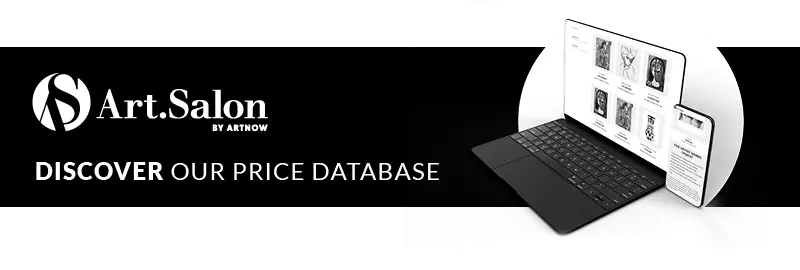
Ongoing discussions about the restitution of cultural artefacts in Germany
Although former colonial powers such as Germany, France or Great Britain have been dealing with the restitution of cultural artefacts for some time, this process is far from complete. The uneven claim of different institutions within Germany to deal with the matter shows how ambivalently the matter is handled: While a central contact point for collection material begins its work, the recently opened Humboldt Forum exhibits the much debated Benin bronzes, in the same year. The entire discussion seems to be guided less by the fact that around 90 per cent of the cultural heritage of the entire African continent is in the possession of European museums, and rather by the specific circumstances of the individual institutions. To avoid this, the idea for the contact point was born two years ago in October - but what has happened since then?

»Zurückgeben« (»Return«) - this is the title of the 2019 German edition of the report on the restitution of African cultural property - i.e. on the return of looted or stolen art to its original and thus rightful owners or legal successors. The authors are Felwine Sarr and Bénédicte Savoy, two names that keep coming up in connection with recent reporting on restitution and provenance research. Provenance research is the branch of art history that explicitly deals with the origin of art objects. The report in question was commissioned by the state, as it was ordered by French President Macron in 2018. The title makes it easy to see what it contains: The report makes clear recommendations for museums and cultural institutions on how to deal with looted and stolen art from colonial contexts. Savoy and Sarr plead for the return of objects that the respective museums cannot prove were not given away of their own free will. They thus propose a reversal of the burden of proof, which seems quite plausible in view of the unequal balance of power between the former colonial power and the colony.
The social scientist Sarr and the art historian Savoy are attracting pan-European attention primarily because of the results of their provenance research, which are summarised in the report: according to the current state of affairs, 90 percent of Africa's cultural heritage is located outside the continent; a large part of it is in Europe's ethnological museums, where it ultimately ended up as a result of violent appropriation by colonial powers and the overreaching of local people. Macron drew consequences about three years ago and took a step towards decolonisation: he announced that three of the statues from the Kingdom of Dahomey in Benin, the portraits of the kings Glélé, Gézo and Béhanzin from the Musée du Quai Branly in Paris, would be returned to Nigeria. With their work, Savoy and Sarr were actually able to make a difference, at least in France, and even more than they had thought: on 27 October 2021, Macron will return 26 art objects originating from Benin to the West African republic - an »international sensation«, Savoy rejoices, for the first time a colonial power is returning something important.
A central networking point for more transparency
Germany, like many other countries, is still seeking its way in dealing with the restitution of cultural objects from the colonial era. In order to advance this endeavour, one year after Macron's undertaking, on 16 October 2019, an organised restitution is now being pushed forward with the announcement of the establishment of the »Contact Point for Collections from Colonial Contexts«. In 2020, this contact point finally began its work in August. It is run by the respective Cultural Foundation of the of the federate states. It is primarily aimed at individuals and institutions from the countries and societies of origin of the cultural property, as its main purpose is to network and advise institutions and relevant actors. Furthermore, it wants to serve as a first point of contact and thus provide access to information about collection items from colonial contexts in Germany, according to the description. What has happened in the two years since its foundation?
Back then, when the Contact Point was still considered a mere project, the cultural sector of course had no idea of the developments in 2020: apart from the unexpected and all-dominating Corona pandemic, the extent to which the Black Lives Matter movement was to spread internationally in the summer of 2020 also came as a surprise to many. The worldwide demonstrations and actions eventually led to criticism of the trivialisation of the colonisation of the African continent within Western cultures also becoming louder from a wider audience. As a result, the German colonial history, which is usually less present domestically compared to the French or British, and with it the genocide of the Herero and Nama in Namibia, should be dealt with in the future. For example, there have been calls for this part of history to be made compulsory in school curricula and thus to become part of the consciousness of a broader population. Against this background, the restitution of looted art from colonial contexts also still represents an open account: So what has become of the Contact Point's work in the meantime and are there examples of presentable restitution behaviour by German museums?
Consistent guidance: Missing
In May 2018, the German Museums Association (Deutscher Museumsbund e.V.) published a guideline on how to deal with »collection items from colonial contexts«. In it, objects originating from looted and stolen art are grouped into three categories: Category 1 includes »objects from formal colonial rule« - this explicitly includes cultural objects from the Kingdom of Benin -, Category 2 includes »objects from colonial contexts outside formal colonial rule« and Category 3 refers to »reception objects from colonial contexts«. However, the Museumsbund expressly emphasises that the classification of an object or a collection in one of the first two categories, i.e. those that have been stolen from other countries, does not imply any statement as to whether the provenance is to be classified as problematic or even whether a return should be considered. One looks in vain for instructions here - at every point it is merely about raising awareness, but not about real advice on how to deal with the cultural objects. It is therefore not surprising that the museums concerned still approach the task of restitution in very different ways and not all with the same élan.
For example, the prestigious Humboldt Forum, which was already criticised, initially chose three of the controversial Benin bronzes for its opening exhibition. The bronze figures come from the pre-colonial kingdom of Benin, where they once adorned the royal palace and came to Europe in 1897 as looted art through colonisation by Great Britain - just like the statues already returned by France. Restitution expert Savoy had already resigned from the Humboldt Forum's advisory board in 2017, i.e. before her and Sarr's report was published, because she generally wanted a more critical examination of the objects in the Humboldt Forum's collection. In an interview with the Süddeutsche Zeitung in 2017, she drew a comparison that was later much quoted: the Humboldt Forum's behaviour reminded her of the way it dealt with the Chernobyl disaster because it tried to hide the background to the collection like nuclear waste under a lead lid.
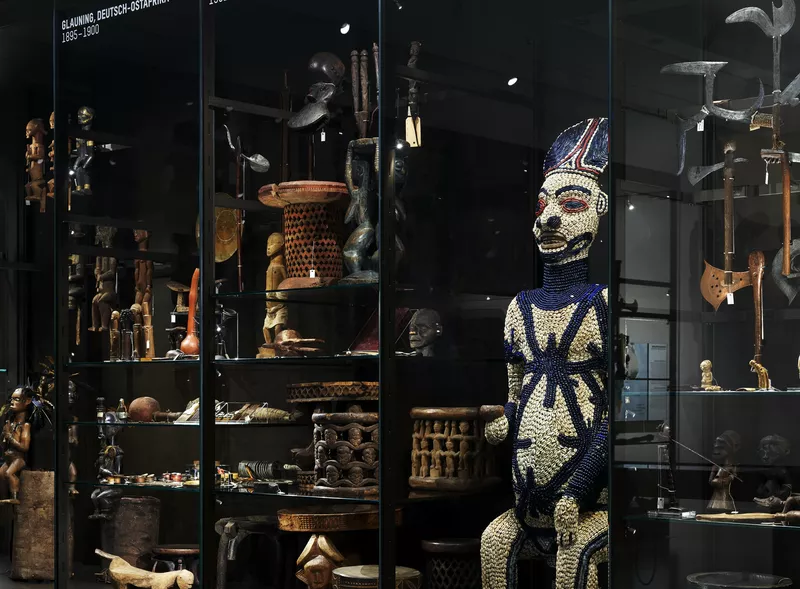
The Humboldt Forum sees itself as a partnership project supported by the Prussian Cultural Heritage Foundation (SPK), the Ethnological Museum and the Museum of Asian Art of the National Museums in Berlin (SMB), the Kulturprojekte Berlin and the Stadtmuseum Berlin, the Humboldt-Universität zu Berlin (HU) and the Humboldt Forum Foundation in the Berlin Palace. The large number of actors involved in the Humboldt Forum also explains the different approaches to dealing with the exhibits, because there is a great deal of disagreement among the Berlin museums: »Coming to terms with colonialism is a clear mandate,« Hartmut Dogerloh, General Director of the Humboldt Forum, for example, admits to dpa. He also shares the view that restitution must take place. In contrast, Hermann Parzinger, President of the Prussian Cultural Heritage Foundation, takes a somewhat different view: »First of all, the future of the bronzes will take place in Berlin. They will be on display in the Berlin City Palace this year,« he told Der Spiegel in April 2021. Shortly before, he also told dpa that he did not want to decide on the future handling of the bronzes alone: »We will discuss this within the framework of the Benin Dialogue Group together with other museums that have Benin bronzes in their collections, and with our partners in Nigeria and Benin City themselves,« he said at the time.
The turning point will come in summer 2021: Parzinger conducts the promised and necessary return talks with the contacts from Nigeria and thus has to bow to the decision of the Minister of State for Culture and Media, Monika Grütters, the heads of the German member museums of the Benin Dialogue Group, the responsible culture ministers of the federal states and the Federal Foreign Office of 29 April: the bronzes are to be returned as of 2022. Parzinger's »authorisation«, however, is described by Deutsche Welle as a »mere formality«.
Whether Parzinger finally changed his mind, whether it was the visit of the Nigerian delegation in July or pure obligation that led him to this sudden openness, remains a matter of speculation - in the past, at least, he has often attracted attention because of his stubborn attitude towards restitution: Ten years ago, for example, Parzinger remained extremely firm when it came to the return of the Nefertiti bust after a repeated official demand by Cairo: »The position of the Prussian Cultural Heritage Foundation regarding the return of the Nefertiti bust remains unchanged. It is and remains Egypt's best ambassador in Berlin«, he argued in Spiegel in 2011. Even eight years later, in January 2019, he does not deviate from this point of view - during his lecture at the Marsilius Lecture at the University of Heidelberg, he maintains that Nefertiti is rightfully in Berlin.
Horst Bredekamp, art historian and founding director of the Humbldt Forum, also sticks to his position in recent pronouncements, which leaves little room for discussion: He is of the opinion that the holdings of the new Ethnological Museum were created out of »anti-colonial intent« and with the intention of preserving them »microcosmically«. This tradition would be extinguished by restitution, as he makes clear in the FAZ in March.
The Humboldt Forum, like many ethnological museums, could benefit from more unity not only in the legitimate handling of such cultural objects, but also in preserving authenticity; after all, the German government would like to set the institution up as a model for the handling of collections in the future. And in general, too, many things are to change in the future with regard to coming to terms with the colonial era: Only recently, the German Federal President Steinmeier spoke out on the subject. At the opening ceremony of the exhibitions of the Ethnological Museum and the Museum of Asian Art in the newly opened Humboldt Forum on 22 September, he explicitly pointed out that German colonialism has been a blind spot so far and that overcoming the deeper roots of everyday racism can only take place by illuminating these blind spots of memory and by dealing with colonial history in a much more profound way than has been the case so far. For this reason, he said, the Humboldt Forum must also be a reminder and a reminder of militarism, nationalism and German colonialism.
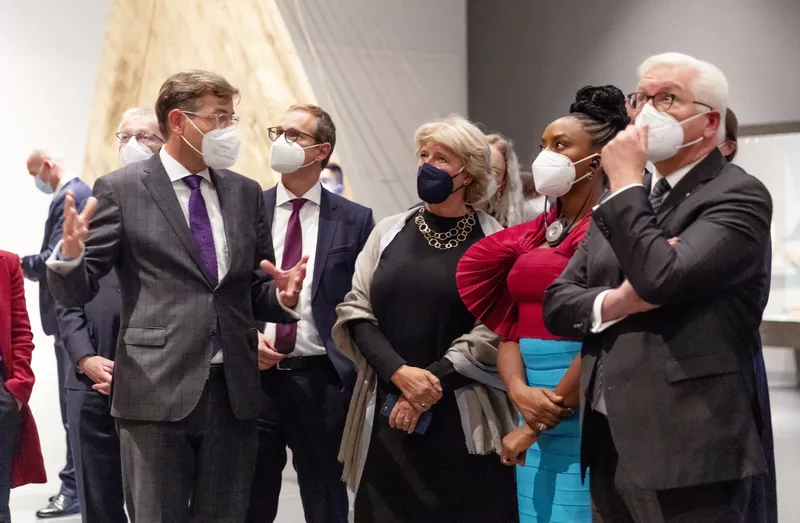
The Role of Origin
It is possible that one of the reasons for the dispute over the restitution of the Benin bronzes is that they were brought from Nigeria to Europe as a result of British - and not German - colonial rule. While this does not fundamentally change the need to clarify ownership claims, another case shows that a clear apportionment of blame can also foster a drive for action. At the beginning of 2019, the Lindenmuseum in Stuttgart said goodbye to two objects from its collection with (late) insight: the family Bible and the whip of the Nama leader Hendrik Witbooi (1834 - 1905) went back to Namibia immediately after they had been exhibited for the last time on 28 February. There they were stolen during the genocide of the Herero and Nama and after Witbooi's death at the beginning of the 20th century. The Linden Museum already conducted provenance research within its own ranks between 2016 and 2018: The institution had its collection examined in a joint project with the University of Tübingen with regard to the origin and handling of colonial-era objects in ethnological museums. The results were presented in a final report in November 2018, the same period as Savoy and Sarr. The investigation focused primarily on the circumstances under which and by whom the goods in question came into the hands of the museum. The resulting recommendations were similar to those of the French counterpart.
And the contact point? In keeping with the Europe-wide discourse on the Benin bronzes, the Stelle announced in a press release in June that from now on, information on the bronzes in the possession of German museums can be viewed at a central website. The contact point is to be contacted by the end of the year. By the end of the year, the respective institutions are to comprehensively document and publish the origin of the goods.
In March 2021, a press release also states that the agency's plan to ensure greater transparency about the collection holdings from colonial contexts in Germany will soon be possible via a central internet address. In the form of a pilot project, information from 25 institutions in Germany that have both collections from colonial contexts and already digitised data will then be available via this digital interface. Transparency is an essential prerequisite for a comprehensive reappraisal of the history of the origin of these objects and for the desired dialogue with the societies of origin, as State Minister of Culture Prof. Monika Grütters says. With a central contact point and advancing provenance research, the museum landscape is thus further along than it was two years ago, but it is probably still a long way from reaching its goal. The example of the Benin bronzes shows: disputes about the whereabouts and inconsistent European action repeatedly cause the restitution of African cultural objects to falter.
More on the subject Controversy
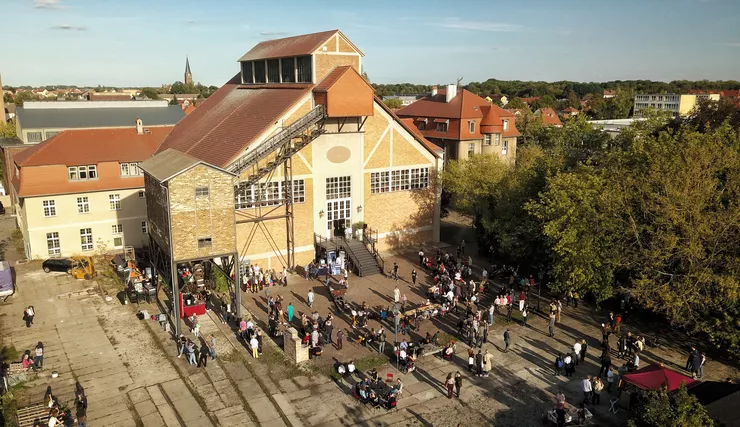
What creative ideas are there for sustainability and climate protection in the art world?
While artists have been addressing the issue of climate change in their work for years, the art industry as such has been quiet for a long time. With the Corona crisis, problems have now come to light whose solutions can have a positive impact on the climate crisis as well.
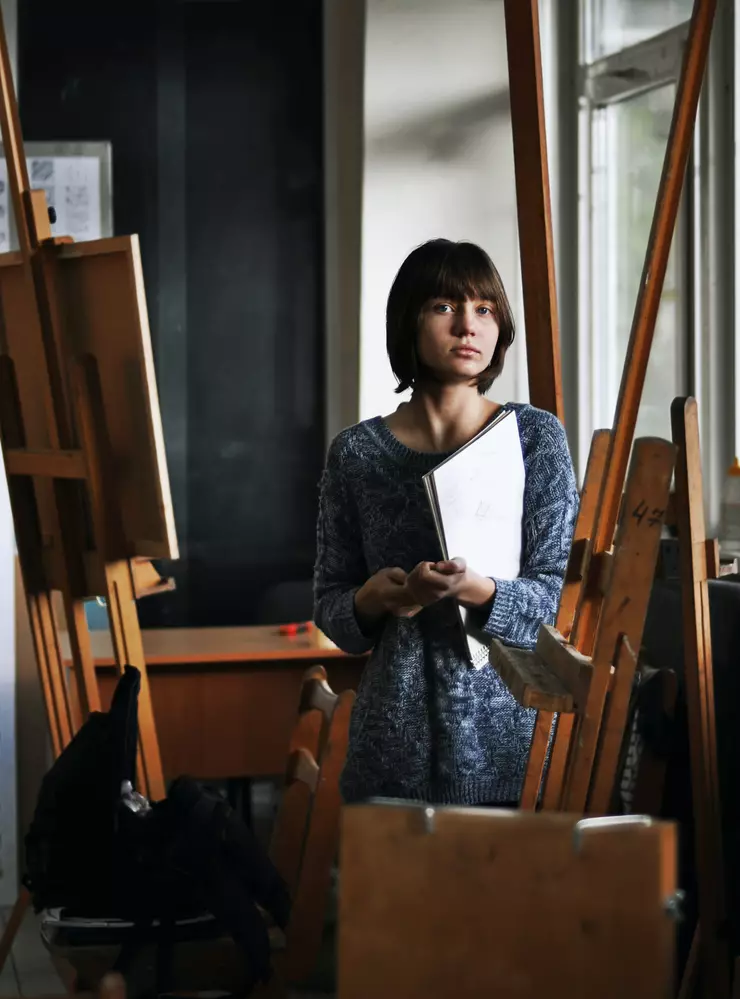
How underrepresented are women in the arts really?
It's hard to deny that the gender pay gap exists - and it doesn't stop at the art industry. Despite the widespread opinion that women are actually relatively common in the creative scene, there is, as is so often the case, an imbalance in favor of men. But is this really only reflected in the fees paid? Figures, data and facts clearly reveal how differently the genders are represented, but what is often missing are insights into the causes and, above all, solutions.
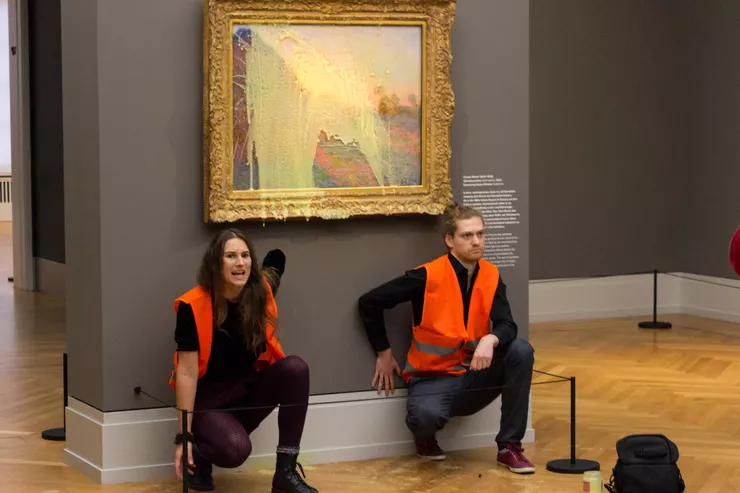
Mashed potatoes on Achilles' heel
One of the first requirements you learn as a child is not to touch anything in a museum because the exhibits are vulnerable and irreplaceable. Liquid mashed potatoes, blood-red tomato soup, and superglue in the exhibit space trigger ventricular fibrillation in culture buffs. Climate protection groups like the Letzte Generation (Last Generation) are now targeting this very weak point.
Walter Smerling's new art hall stirs up tempers
The cultural manager Walter Smerling is allowed to use two halls in the empty Tempelhof Airport rent-free and also receives public funds. The exhibition project goes under the name Kunsthalle Berlin – Flughafen Tempelhof – the art scene reacts indignantly.
Dive deeper into the art world
Mexico City replaces Columbus statue with effigy of indigenous woman
In October 1492 Columbus appeared in America, in October 2020 he had to disappear - at least as a statue from the Paseo de la Reforma in Mexico City. A new monument honouring the country's indigenous women is now to be erected there by the end of the year.





